
The Most Picturesque Villages in Gran Canaria
In between the cosmopolitan capital of Las Palmas in the north and the resort town of Maspalomas in the south lies countless charming villages in Gran Canaria. The remarkably diverse landscapes of this Canary Island are dotted with everything from white-washed communes perched high in the mountains to colorful ports situated right by the sea. If you are planning to head off the beaten track in Gran Canaria, then follow this guide to find yourself in 10 lovely little destinations.
1. Agüimes
The first thing that grabs your attention in the Historic Quarter of Agüimes, located on the eastern side of the island, is the Parish Temple/Church of San Sebastian with its stunning neoclassical design. The temple boasts rounded arches and a dome with 12 large windows representing the famed 12 Apostles. Construction on the church began in the late 18th century but it wasn’t until the 1940s that it was finally finished. In 1981, it was recognized as a Monument of National Historical Interest.
Other notable places are Plaza de San Anton, Museo de Historia and Hotel Rural Casa de Los Camellos. Agüimes is definitely worth visiting, even just for a day to stroll through its tranquil streets and marvel at the architecture. The municipality of Agüimes – which includes a mountain area, agricultural area (where the Historic Quarter is found) and coastal area – offers much more for those thinking of staying overnight. You can venture to the nearby hamlet of Temisas or to the valley of Guayadeque.
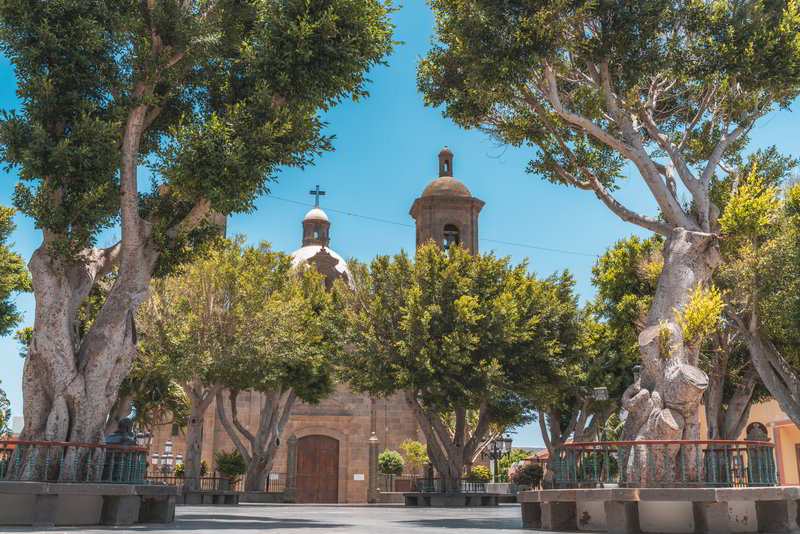
2. Artenara
Artenara is nestled in the mountains, only 40 kilometers from Las Palmas. It’s one of the highest villages in Gran Canaria standing at an impressive 1,270 meters. The natural balcony which Artenara sits on affords epic views of the ridges and valleys that make up the island’s Biosphere Reserve, Roque Nublo and Roque Bentayga being the top vistas. Around 1,000 residents call this place home – so you won’t find too much hustle and bustle, just one of the most peaceful villages in Gran Canaria.
A cool aspect about this destination are the cave houses that you can visit. For example, some of our experiences at Epic Tours Gran Canaria (like our Full Island Private Photography Tour) stop off at Artenara for a lunch break in a cave restaurant that has breathtaking views on display. The local cave houses used to be inhabited but were recently converted into accommodation and dining establishments. They all give you a small glimpse into the past when a quaint traditional way of life thrived.
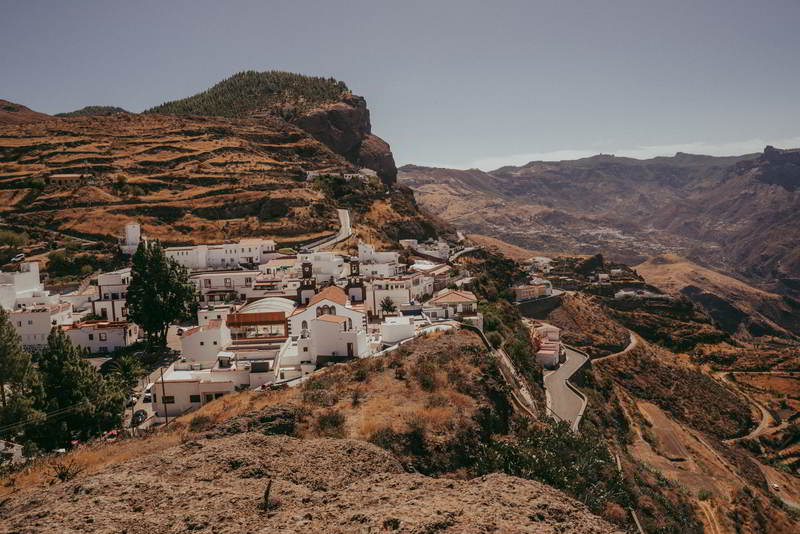
3. Arucas
Arucas is the first place you should visit after arriving in Las Palmas (if that is your port of entry). The Church of San Juan Bautista is the most impressive piece of architecture you are likely to see not only in Gran Canaria but in the entire Canary Islands archipelago. It’s made of black stone and designed in a haunting neo-Gothic style. The surrounding pedestrian-only streets, lined with shops and restaurants and terraces, makes the town center a charm to walk around for a few hours.
A morning or afternoon is about right for Arucas and you could also easily combine it with another pretty town nearby like Firgas or Teror to make the most of the day. That being said, you might be tempted to take a tour inside Destilerias Arehucas and try some of their rum. After downing some delicious cocktails, your plans may change. It could lead to more distillery visits or rum purchases for your friends back home. If that happens, you will want to stay overnight in Arucas.
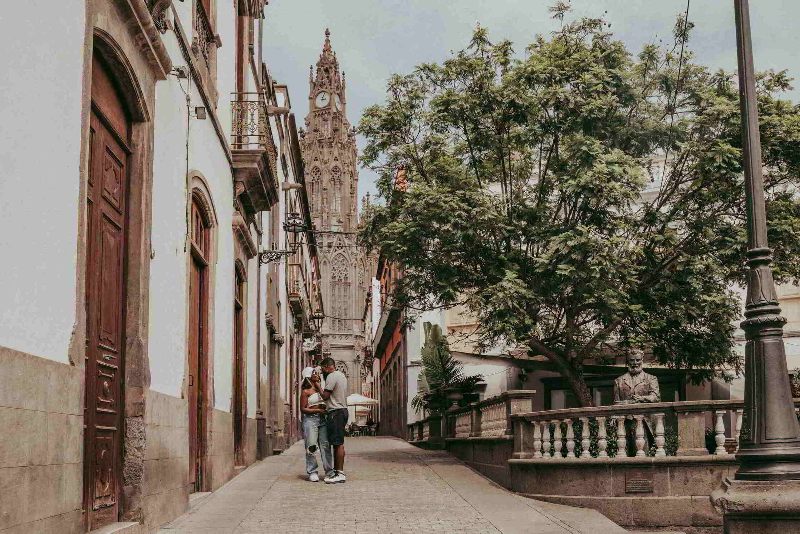
4. Fataga
When traveling south down the island, perhaps on your way to Maspalomas or Puerto de Mogan, one village in particular with white-colored houses should not be missed: that of Fataga. The streets of this seductive town are characterized by magnetic white buildings with red tiled roofs, narrow cobblestone paths and small family orchards bursting with colorful flowers. You could spend a morning or afternoon, indeed an entire day, wandering the alleyways and taking photos.
However, half the fun of Fataga is getting there. Driving through the Valley of a Thousand Palms – with its incredible cliffs and groves of palm and fruit trees – is the perfect warm up. An alternative stop along the way is the lookout of Degollada de las Yeguas which showcases sweeping views as far as Dunas de Maspalomas and closer by to the Fataga Valley. Although it’s probably not worth staying overnight in Fataga, a day trip is still a nice idea and something that we highly recommend.
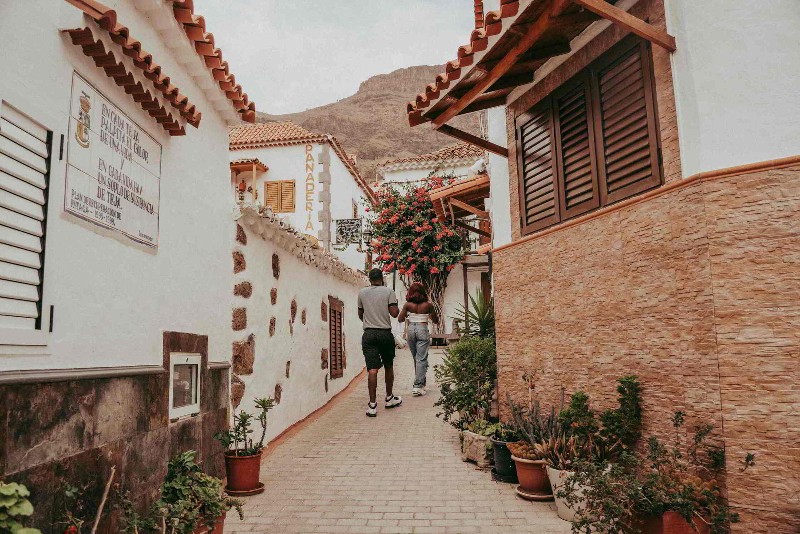
5. Firgas
Firgas is one of the best kept secrets of the island, which is why it’s included as an itinerary option on our Hidden Gems Private Photography Tour. A couple of hours exploring plus some time relaxing in one of the cozy cafes is all you really need for Firgas. Beautiful buildings are plentiful here. Iglesia De San Roque, Ayuntamiento de Firgas, Parque Fontana Rosa and Molino de Agua de Firgas are just the beginning. Head off for a stroll and see what you can find.
The highlight, of course, is the Paseo de Canarias with its 30 meter long stone waterfall that has many intricate artistic representations of the island’s municipalities and all the Canaries. It’s a gorgeous photo-op that’s for sure. Since this is one of those villages of Gran Canaria well above sea level, there are some fantastic viewpoints around town as well such as Mirador Plaza De San Roque, Mirador Barranco Las Madres and Mirador de Las Pellas. You will be able to see the coastline from some of them.
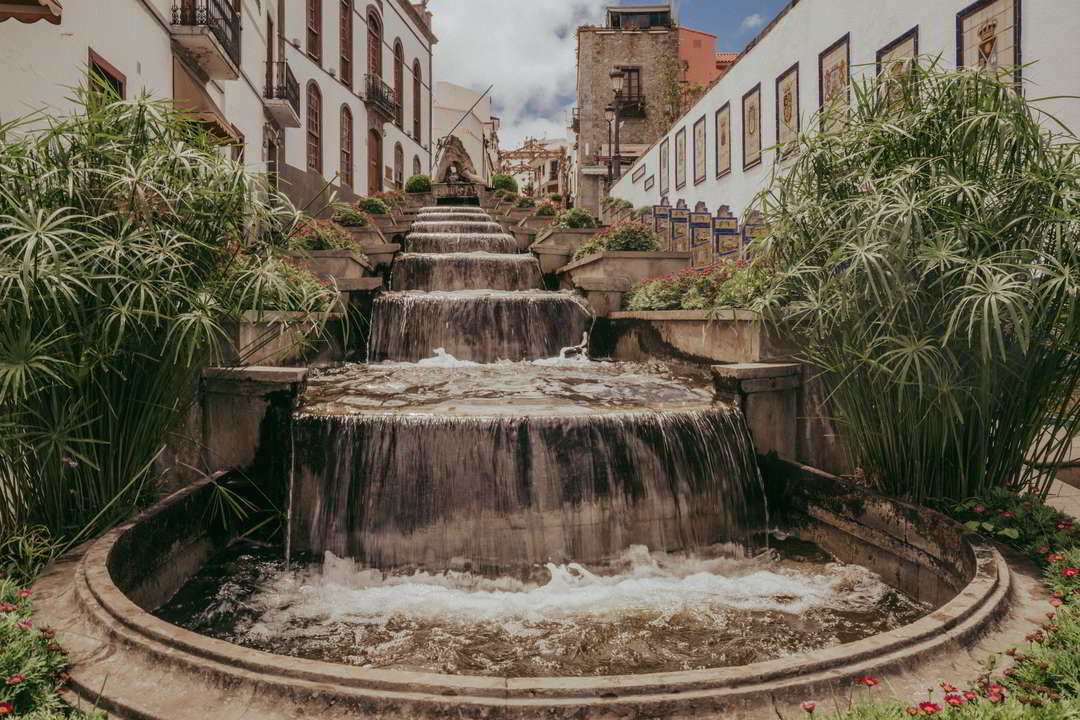
6. Gáldar
Gáldar was the first capital of Gran Canaria and as such has well-preserved, centuries-old architecture. The beauty of this place all starts in the town square called Plaza de Santiago with the formidable Iglesia de Santiago overlooking everything. From there you can duck down the little pedestrian streets and marvel at the old buildings. One amazing attraction in Gáldar that you will either hear about or stumble upon yourself is the Cueva Pintada Museum and Archaeological Park.
It took over 20 years of careful excavation, preservation and planning to put this archaeological museum together and the final result is nothing short of world-class. The building has been constructed around the remains of an aborigine settlement that dates back long before Europeans arrived on Gran Canaria. The original inhabitants of the island used to live in houses and caves, and they left many rock paintings behind – unique symbols that have now become a big part of Canarian culture.

7. Moya
The municipal town of Moya is the gateway to Los Tilos de Moya Nature Reserve. This magical laurel forest is brimming with exotic evergreen trees and plant species. Hiking the lush paths of Los Tilos de Moya is without doubt one of the best things to do in Gran Canaria. For this reason, it might pay to stay overnight in Moya for a night or two so you can go for a nice trek or two. The town itself also features some magnificent buildings like Nuestra Senora de la Candelaria Church.
The church sits close to a cliff face that plummets down into the Barranco de Moya. After admiring the design on the outside, with its striking white color and stained glass windows, be sure to pop inside to see some brilliant pieces of art. Another site to swing by is Casa-Museo Tomas Morales. For those who don’t know, Morales was a Canarian poet and this spot was his family home. You can browse through archives, a collection of pictures, the poet’s library and various exhibitions.
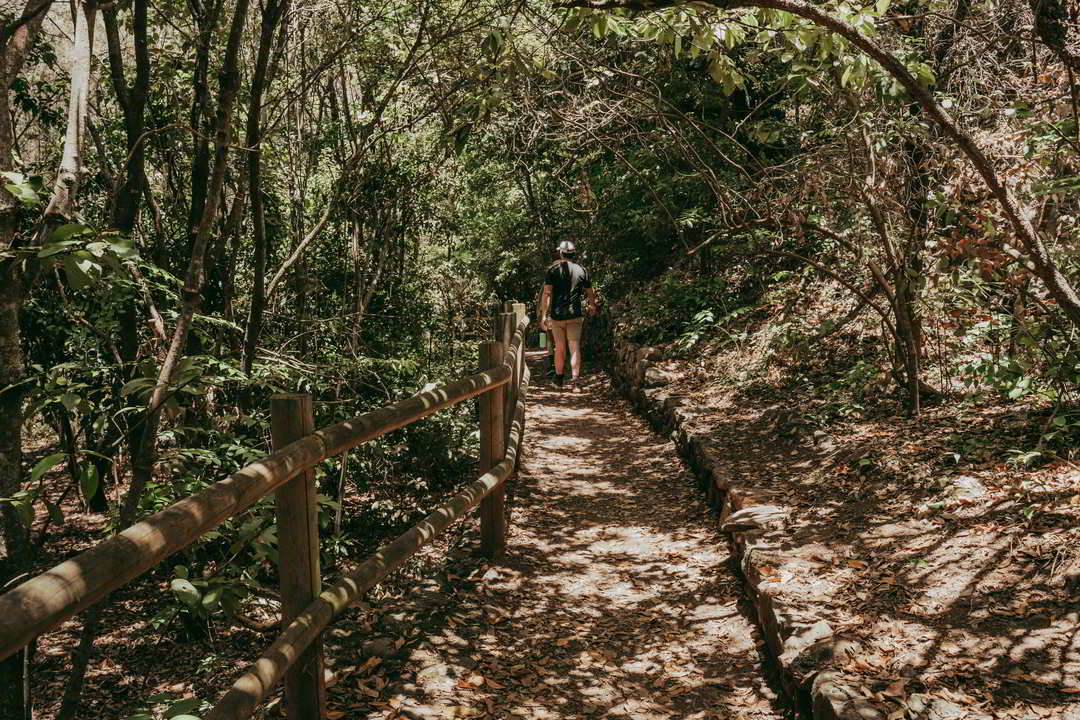
8. Puerto de Mogán
A special hideaway in Gran Canaria, where you can escape from the stresses of the world, is Puerto de Mogán. It’s a great option for families with kids as there is a sheltered beach for them to enjoy, plus a range of water-based activities. Adults are spoilt for choice too. Being a fishing village means there are some awesome deep-sea fishing charters you can join to try your luck at catching the biggest fish of your life. This can be done while the wife relaxes on the beach back in the port.
Or perhaps she might enjoy walking around the bridged waterways, taking photos of the colorful architecture, and grazing on a platter and sipping wine at a local restaurant. By booking an apartment in the heart of it, with views of the sea, you will be able to immerse yourself in everything that Puerto de Mogán has to offer. Some travelers only stay here on their Canary Islands’ trips because they have fallen in love with this remote corner of the island. And fair enough, it’s very appealing.
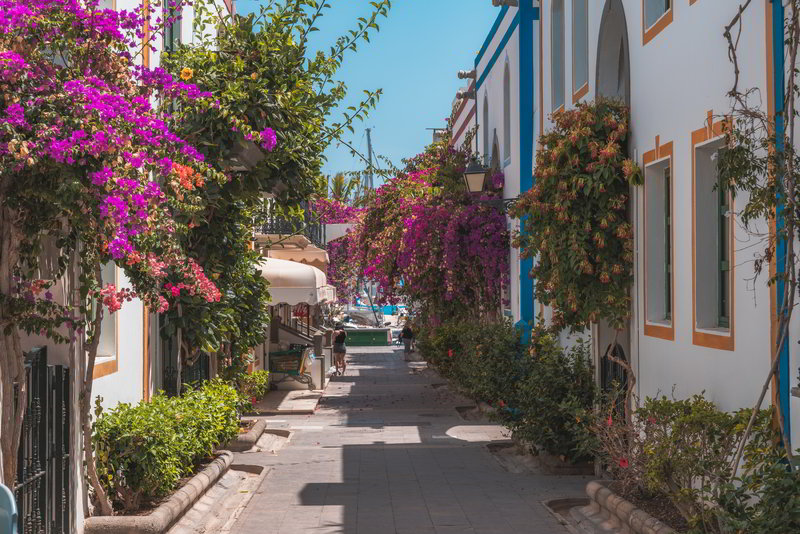
9. Tejeda
Whether you want to soak up the white-colored buildings on a day trip or base yourself here for two or three nights for the Roque Nublo and Pico de las Nieves hikes, Tejeda should be one of those villages that you spend a lot of time in on your Gran Canaria adventure. Situated in the island’s center, in an incredibly beautiful mountainous region, Tejeda offers some of the most stunning views in all of the Canary Islands. You can check them out from the village itself or from a nearby hike or lookout point.
In addition to architecture and nature, art and culture are also present in this municipality. The Museo de Esculturas Abraham Cardenes hosts the work of a prominent Canarian sculptor, and the Ethnographic Museum and Centro de Plantas Medicinales are also worth visiting. Most of the aforementioned attractions have explanations/translations in English, so you don’t need to worry about being fluent in Spanish to learn about the village’s rich artistic and cultural heritage.
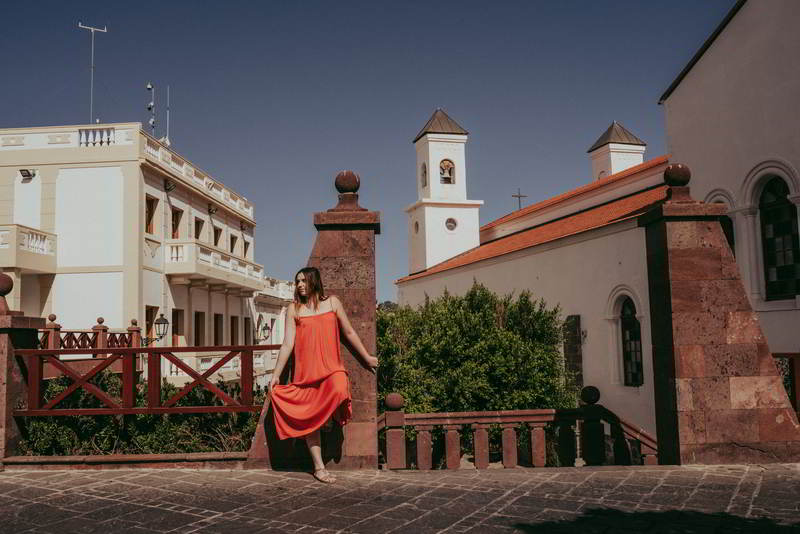
10. Teror
Teror is one of the most devoutly religious villages in Gran Canaria. The Virgen del Pino, and its Basilica de Nuestra Senora del Pino, attracts thousands of visitors every year. The whole month of September is one big celebration in honor of the Virgin. Not only is the church and sense of religiosity uplifting, but the streets lined with 15th century wooden houses and balconies are also delightful. The architecture and monuments around the Plaza de Teror are aesthetically alluring.
This marvelous town serves up some hearty food. If you are looking for a place to try typical Canarian food then Teror might just be your best bet. There are dozens of quality restaurants here that have high ratings. Make sure you order dishes like Ropa Vieja stew, Carne en Adobo (marinated meats), Montaditos (delicious open meat sandwiches often served as small tapas), and don’t forget to try the local delicacies like spicy chorizo spreads and sweet black puddings.

